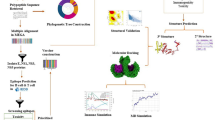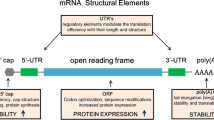Abstract
This review argues that the three popular concepts of design, rationality and reductionism, which guided vaccine research for many years, actually contributed to the inability of vaccinologists to develop an effective HIV vaccine. The strong goal-directed intentionality inherent in the concept of design together with excessive confidence in the power of rational thinking convinced investigators that the accumulated structural knowledge on HIV epitopes, derived from crystallographic studies of complexes of neutralizing antibodies bound to HIV Env epitopes, would allow them to rationally design complementary immunogens capable of inducing anti-HIV protective antibodies. This strategy failed because it was not appreciated that the structures observed in epitope-paratope crystallographic complexes result from mutually induced fit between the two partners and do not represent structures present in the free disordered molecules before they had interacted. In addition, reductionist thinking led investigators to accept that biology could be reduced to chemistry, and this made them neglect the fundamental difference between chemical antigenicity and biological immunogenicity. As a result, they did not investigate which inherent constituents of immune systems controlled the induction of protective antibodies and focused instead only on the steric complementarity that exists between bound epitopes and paratopes.
Similar content being viewed by others
References
Kay L (2000) Who wrote the book of life: a history of the genetic code. Stanford University Press, Stanford
Ruse M (2002) Design as metaphor. Darwin and design: does evolution have a purpose? Harvard University Press, Cambridge, pp 271–288
Hanke D (2004). In: Cornwell J (ed) Explanations. Styles of Explanation in Science. Oxford University Press, Oxford, pp 143–155
Van Regenmortel MHV (2007) The rational design of biological complexity: a deceptive metaphor. Proteomics 7:965–975
Van Regenmortel MHV (2019) Truth in science and in molecular recognition, post -truth in human affairs. J Mol Recognit 33(1):e2827. https://doi.org/10.1002/jmr2827
Bauer HH (1992) Scientific literacy and the myth of the scientific method. University of Illinois Press, Urbana
Gauch HG (2012) Scientific Method in Brief. University Press, Cambridge
McIntyre L (2019) The scientific attitude. The MIT Press, Cambridge
Van Regenmortel MHV (2016) Structure-based reverse vaccinology failed in the case of HIV because it disregarded accepted immunological theory. Int J Mol Sci 17:1591–1625
Scherer EM, Leaman DP, Zwick MB, McMichael AJ, Burton DR (2010) Aromatic residues at the edge of the Ab combining site facilitate viral glycoprotein recognition through membrane interactions. Proc Natl Acad Sci USA 107:1529–1534
Dupré J (1993) The disorder of things. Metaphysical foundations of the disunity of science. Harvard University Press, Cambridge
Berger R (1998) Understanding science: why causes are not enough. Philosos Sci 65:306–332
Magnani L (1999) Model-based creative abduction . In: Magnani L, Nersessian NJ, Thagard P (eds) Model-based reasoning in scientific discovery. Kluwer Academic/Plenum Publishers, New York, pp 219–238
Douven I (2017) Abduction. Stanford encyclopedia of philosophy. Center for the Study of Language and Information, Stanford University, Stanford
Simon H (1966) The sciences of the artificial, 3rd edn. MIT Press, Cambridge
Du Sautoy M (2016) What we cannot know. Harper Collins Publishers, New York, pp 36–73
Gannon F (2007) Too complex to understand? EMBO Rep 8:705
Van Regenmortel MHV (2018) Development of a preventive HIV vaccine requires solving inverse problems which is not attainable by rational vaccine design. Front Immunol 8:2009
Laplane L, Mantovani P, Adolphe R, Chang H, Mantovani A, McFall-Ngai M, Rovelli C, Sober E, Pradeu T (2019) Why science needs philosophy. Proc Natl Acad Sci US 116:3948–3852
Crick FHC (1966) Of molecules and men. University of Washington Press, Seattle
Kurakin A (2010) Order without design. Theor Biol Med Model 7:12–22
Van Regenmortel MHV (2012) Basic research in HIV vaccinology is hampered by reductionist thinking. Front Immunol 3:194
Berzofsky JA (1985) Intrinsic and extrinsic factors in protein antigenic structure. Science 229:932–940
Hilleman MR (1992) (1992) Impediments imponderables and alternatives in the attempt to develop an effective vaccine against AIDS. Vaccine 10:1053–1058
Kong L, Sattentau QJ (2012) Antigenicity and immunogenicity in HIV-1 antibody-based vaccine design. J AIDS Clin Res https://doi.org/10.4172/2155-6113
Burton DR, Ahmed R, Barouch DH, Butera ST, Crotty S, Godzik A, Godzik A, Kaufmann DE, McElrath MJ, Nussenzweig MC, Pulendran B et al (2012) A blueprint for HIV vaccine discovery. Cell Host Microbe 12:396–407
Kunik V, Ofran Y (2013) The indistinguishability of epitopes from protein surface is explained by the distinct binding preferences of each of the six antigen-binding loops. Protein Eng Des Sel 26:599–609
Eisen HN, Chakraborty AK (2010) Evolving concepts of specificity in immune reactions. Proc Natl Acad Sci USA 107:22373–22380
Eisen HN (2001) Specificity and degeneracy: Yin and Yang in the immune system. Ann Rev Immunol 19:1–21
Van Regenmortel MHV (2014) Specificity, polyspecificity and heterospecificity of antigen-antibody recognition. J Mol Recognit 27:627–639
Douek DC, Kwong PD, Nabel GJ (2006) The rational design of an AIDS vaccine. Cell 124:677–681
Bramwell VW, Perrie Y (2005) The rational design of vaccines. Drug Discov Today 10:1527–1534
Burton DR (2010) Scaffolding to build a rational vaccine design strategy. Proc Natl Acad Sci USA 107:17859–17860
Walker LM, Burton DR (2010) Rational antibody-based HIV-1 vaccine design: current approaches and future directions. Curr Opin Immunol 22:358–366
Van Regenmortel MHV (2015) Why does the molecular structure of broadly neutralizing monoclonal antibodies isolated from individuals infected with HIV-1 not inform the rational design of an HIV-1 vaccine? AIMS Public Health 2:183–193
Hans D, Young PR, Fairlie DP (2006) Current status of short synthetic peptides as vaccines. Med Chem 2:627–646
Burton DR (2002) Antibodies, viruses and vaccines. Nat Rev Immunol 2:706–713
Rappuoli R (2001) Reverse vaccinology, a genome-based approach to vaccine development. Vaccine 19:2688–2691
Rappuoli R, Bagnoli F (2011) Vaccine design: innovative approaches and novel strategies. Caister Academic Press, Norfolk
Burton DR (2017) What are the most powerful immunogen design strategies? Reverse vaccinology 2.0 shows great promise. Cold Spring Harbor Perspect Biol 9:a030262
Neurath AR, Rubin BA (1971) Viral Structural components as immunogens of prophylactic value. In: Monographs in Virology, Basel: Karger.
Van Regenmortel MHV (1992) The conformational specificity of viral epitopes. FEMS Microbiol Lett 100:483–466
Xiao X, Chen W, FenG Y, Zhu Z, Prabakaran P, Wang Y, Zhang MY, Longo NS, Dimitrov DS (2009) Germline -like predecessors of broadly neutralizing antibodies lack measurable binding to HIV-1 envelope glycopropteins: implications for evasion of immune responses and design of vaccine immunogens. Biochem Biophys Res Commun 390:404–409
Dimitrov DS (2010) Therapeutic antibodies, vaccines and antibodyomes. MAbs 2:347–356
Mascola JR, Haynes BF (2013) HIV-1 neutralizing antibodies: understanding nature’s pathways. Immunol Rev 254:225–244
Doria-Rose NA, Joyce MG (2015) Strategies to guide the antibody maturation process. Curr Opin Virol 11:137–147
Umotoy J, Bagaya BS, Joyce C, Schiffner T, Menis S et al (2019) Rapid and focused maturation of a VRC01-class HIV broadly neutralizing antibody lineage involves both binding and accommodation of the N276-glycan. Immunity 51:141–154
Greenspan NS (2014) Design challenges for HIV-1 vaccines based on humoral immunity. Front Immunol 5:335
Esparza J (2013) A brief history of the global effort to develop an HIV vaccine. Vaccine 31:3502–3518
Esparza J (2015) A new scientific paradigm may be needed to finally develop an HIV vaccine. Front Immunol 6:124
Goh GK, Dunker AK, Uversky VN (2015) Shell disorder, immune evasion and transmission behaviors among human and animal retroviruses. Mol Biost 11:437–447
Goh GK, Dunker AK, Foster JA, Uversky VN (2019) HIV vaccine mystery and viral shell disorder. Biomolecules 9:178
Nakaya HI, Pulendran B (2012) Systems vaccinology: its promise and challenge for HIV vaccine development. Curr Opin HIV AIDS 7:24–31
Pulendran B (2014) Systems vaccinology: probing’s humanity’s diverse immune systems with vaccines. Proc Natl Acad Sci USA 111:12300–12306
Funding
None.
Author information
Authors and Affiliations
Corresponding author
Ethics declarations
Conflict of interest
The author reports that he does not have any conflicts of interest.
Ethical approval
This article does not contain any studies with human participants or animals performed by any of the authors.
Additional information
Handling Editor: Tim Skern.
Publisher's Note
Springer Nature remains neutral with regard to jurisdictional claims in published maps and institutional affiliations.
Rights and permissions
About this article
Cite this article
van Regenmortel, M.H.V. What does it mean to develop an HIV vaccine by rational design?. Arch Virol 166, 27–33 (2021). https://doi.org/10.1007/s00705-020-04884-0
Received:
Accepted:
Published:
Issue Date:
DOI: https://doi.org/10.1007/s00705-020-04884-0




